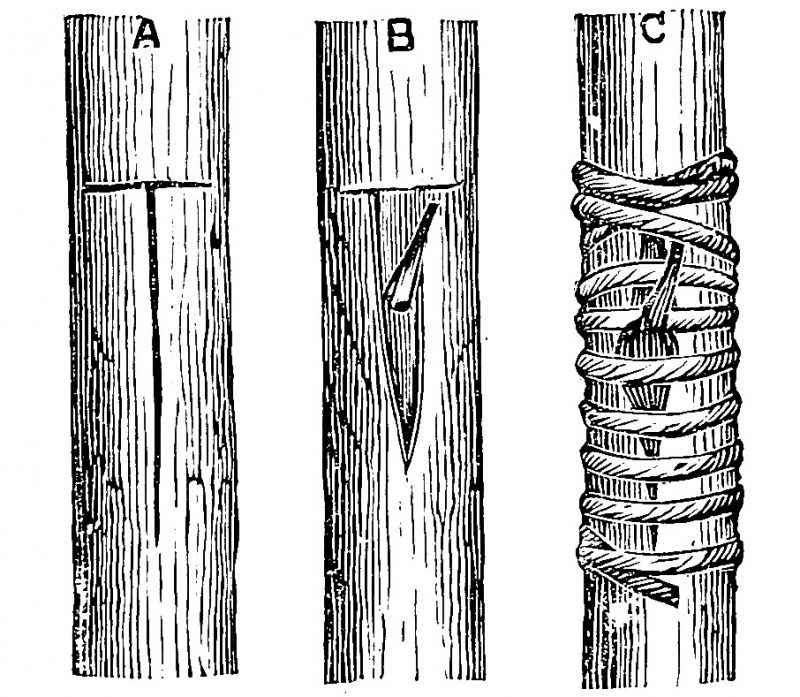(Olive grafting, from a public domain print from Wikimedia Commons.)
Daily Office Readings for Friday, April 12, 2019:
AM Psalm 95* & 22; PM Psalm 141, 143:1-11(12)
Jer. 29:1,4-13; Rom. 11:13-24; John 11:1-27 or 12:1-10
* For the Invitatory
If you’re like many of us here in the middle of the U.S., and just starting to come out from what has been a wet, hard winter, today’s Epistle almost certainly caught your eye. Paul’s discussion of fruit and olive tree grafting smells of spring, doesn’t it? We can identify with fruit trees this time of year as we watch buds begin to spring open, and fret about the occasional below freezing night as we cover young budding trees we might have just planted.
Paul brings up an important point–we tend to identify trees–apple, peach, olive–by their fruits. We pay attention to what happens above the ground. We scarcely even give a thought to the roots, unless we’re digging nearby and encounter some–and even then, we think of them as a nuisance. Yet the reality is, there would be no fruit without a sturdy root system to give the tree nourishment.
Very likely, Paul’s audience was more horticulturally savvy than we might realize. Even in Biblical times, olive growers had long ago learned that thoughtful and careful grafting of some varieties of olives onto stronger rootstock could produce greater yields of olives. It was easy for them to (no pun intended) connect to the idea of humans as broken branches, without roots, being carefully grafted by the hand of a loving God onto strong, nourishing rootstock.
As Paul weaves his analogy, we realize that the wind shows no impartiality in breaking branches–it shatters the branches of trees that bear much fruit as well as ones that bear no fruit at all. Whether we are people who bear much fruit, none, or something in between, the winds of chance can leave any of us suddenly rootless. In the same vein, the quality of the branch stock has no bearing on whether or not a graft will “take”–it totally depends on a combination of the quality of the rootstock, and the skill of the one doing the grafting.
Lent is a time that we are asked to examine the roots of our faith, and through the actions of taking on new spiritual practices, discover new ways our souls our nourished by grafting ourselves in a new way to the divine nourishment we can obtain by being well rooted and well grounded in our relationship with God. Even though this holy season is drawing to a close, and we are just a few spins on the Earth’s axis from Easter, we have room to start to examine our Lent in retrospect. Did we discover a new source of nourishment? Do we feel a little more grounded in the roots of our faith? Can we feel the changes of a new graft in our lives beginning to “take?” We also have room to examine the graft itself–how well did we accept the act of being grafted?
Even though Lent is drawing to a close, it may be weeks, months or years more before we fully can understand or appreciate our own new graftings, and the process of prayerful, reflective self-examination can lead us closer to God in this upcoming season of resurrection. Keep grafting, keep reflecting–and feel the nourishment and growth!
What have you discovered about the roots of your faith, in these closing days of Lent?
Maria Evans splits her week between being a pathologist and laboratory director in Kirksville, MO, and gratefully serving in the Episcopal Diocese of Missouri . She is presently enjoying a brief hiatus as a “free range priest”, awaiting her next call as an interim.

